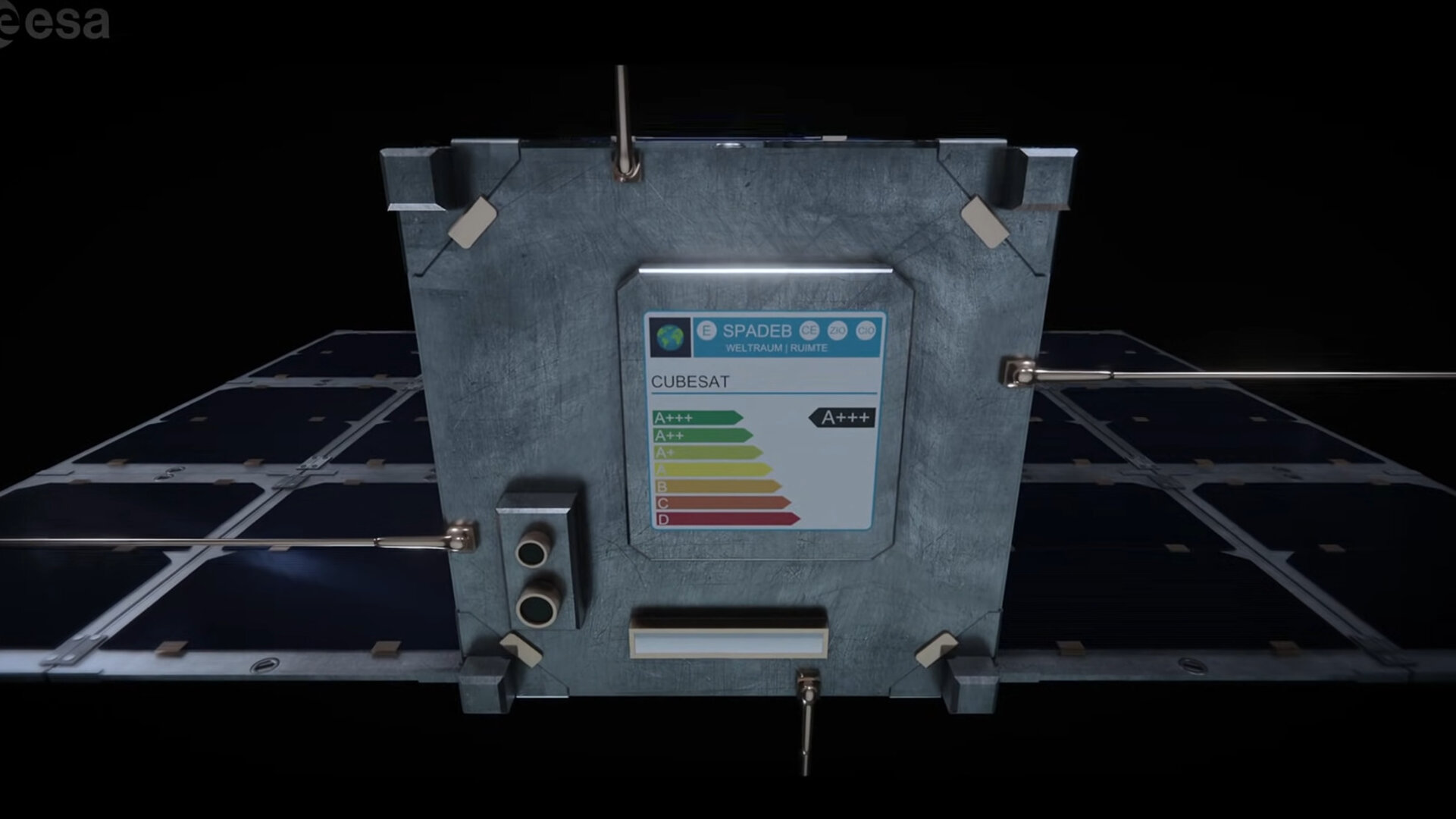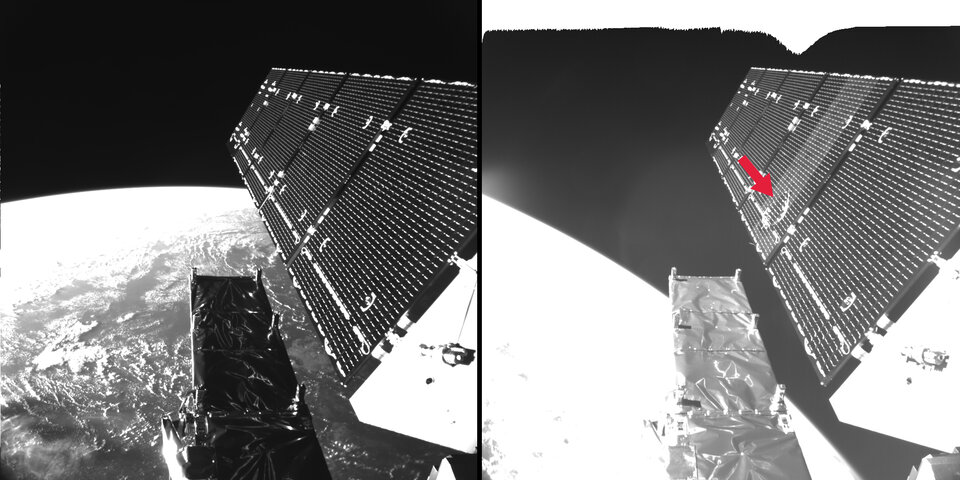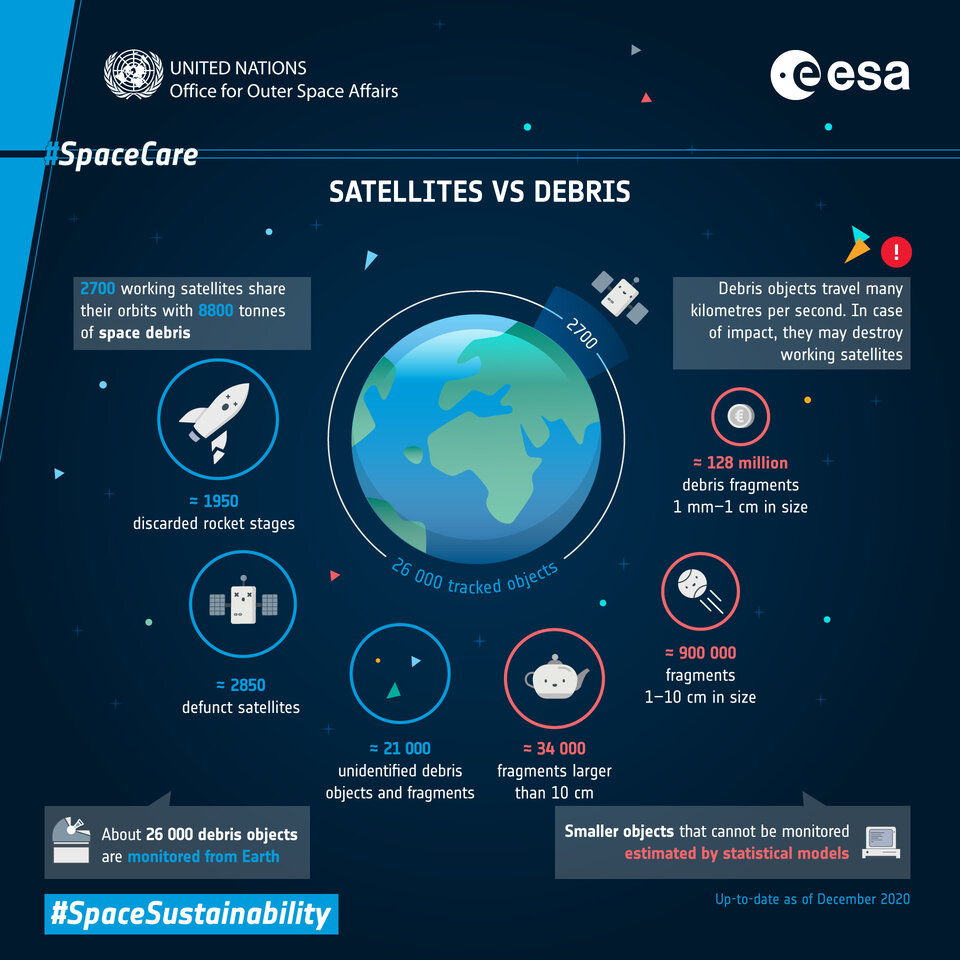
There’s a problem brewing overhead. Invisible to the naked eye and relatively unheard of, it threatens our future in space – space debris.
A new ‘Space Sustainability Rating’ is currently in development that will shed light on the problem, scoring space operators on the sustainability of their missions, increasing the transparency of their contributions to protecting the space environment and encouraging and recognising responsible behaviour.
The global initiative, launched by the World Economic Forum, is the first of its kind. In a situation in which no single government or authority has the power to set and enforce strict rules of behaviour for all space-faring organisations, this project promises to be a game changer.
Much like the energy efficiency and nutrition labels now common on household items, food products and consumer goods, the Space Sustainability Rating will make clear what individual companies and organisations are doing to sustain and improve the health of the near-Earth environment.
Sustainability rating enters next phase
The SSR initiative has been developed over the past two years by the Forum, ESA and a joint team led by the Space Enabled Research Group at the MIT Media Lab, with collaboration from BryceTech and the University of Texas at Austin.
For the crucial next step, the Space Center (eSpace) at the Swiss Federal Institute of Technology Lausanne (EPFL) has been selected to lead and operate the Space Sustainability Rating in preparation for its roll out.
“The Forum is very glad to support such an innovative approach to the global challenge of space debris,” says Nikolai Khlystov, Community Lead for Mobility and Space at the World Economic Forum.
“Incentivising better behaviour by enabling actors to compete on sustainability will create a ‘race to the top’ and eSpace at EPFL is a great organisation to take the SSR to the next level.”
ESA measures the impact

The SSR rating system will score the sustainability of spaceflight operators based on factors ranging from data sharing, choice of orbit, measures taken to avoid collisions and plans to de-orbit satellites at end of mission to how easily their satellites can be detected and identified from the ground. There will be ‘bonus marks’ for adding optional elements, such as grappling fixtures, that could be used for the possible future active removal of debris.
“The SSR aims to influence behaviour by all spaceflight actors, especially commercial entities, and help bring into common usage the sustainable practices that we desperately require,” said Holger Krag, Head of ESA’s Space Safety Programme.
“To achieve this, the SSR rating includes a peer-reviewed assessment of the short- and long-term risks that any mission presents to other operators and for our orbital environment in general.”
Powered by ESA expertise

ESA’s Space Debris Office, located at the Agency’s ESOC mission control centre in Darmstadt, Germany, has for years studied the debris environment, becoming a world-leading authority on this issue of global concern.
The Agency’s role in the development of the Space Sustainability Rating includes helping to define the ‘rating architecture’, i.e. the criteria on which space missions should be judged, and providing expert analysis, data and technical know-how developed over many years.
One particularly important component of the SSR is the new methodology for quantifying the space debris risk associated with a mission. It takes into account the additional burden the new mission poses to the operations of existing ones and its potential impact on the long-term evolution of the space debris environment.
Once the rating system has entered operation, ESA will support EPFL in evaluating this potential impact for new space missions. The Agency will also take a seat on the Space Sustainability Rating Advisory Board, as well as continuing to assist in many other ways.
Rewarding good behaviour
Satellites have become the backbone of our modern economies, providing navigation services, telecommunications, weather forecasting, climate monitoring and television broadcasts among many other critical services. Humankind’s reliance on space infrastructure is set to increase sharply with the launch of large constellations of small satellites designed to boost global internet access among other important services.
There are currently close to 4,000 active satellites in orbit, including the inhabited outposts of the International Space Station and the Tiangong Space Station, currently under construction.


Access the video
Exponential growth
As many more organisations from many more countries prepare to launch new missions, this number is set to grow exponentially. This will inevitably increase the risk of collisions and raises questions about the capacity of economically vital near-Earth orbits to safely and sustainably accommodate so many craft.
By voluntarily joining the new SSR system, spacecraft operators, launch service providers and satellite manufacturers will be able to secure one of four levels of certification that they can advertise widely to demonstrate their mission’s commitment to sustainability.
Boosting transparency and doing right
This will increase transparency – without disclosing any mission-sensitive or proprietary commercial information – and is expected to incentivise good behaviour by other stakeholders in addressing the problem of space debris. A favourable score for a particular rated operator might, for example, result in lower insurance costs or improved funding conditions from financial backers.
Ghosts of historic space endeavours – old satellites and rocket bodies – litter Earth orbits. While missions are being developed to remove some of these objects, it’s vital that we don’t repeat the mistakes of the past. The Space Sustainability Rating will play an important part in wider measures to ensure the responsible use of space, and its sustainable future for all.



